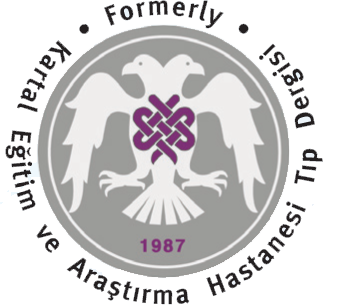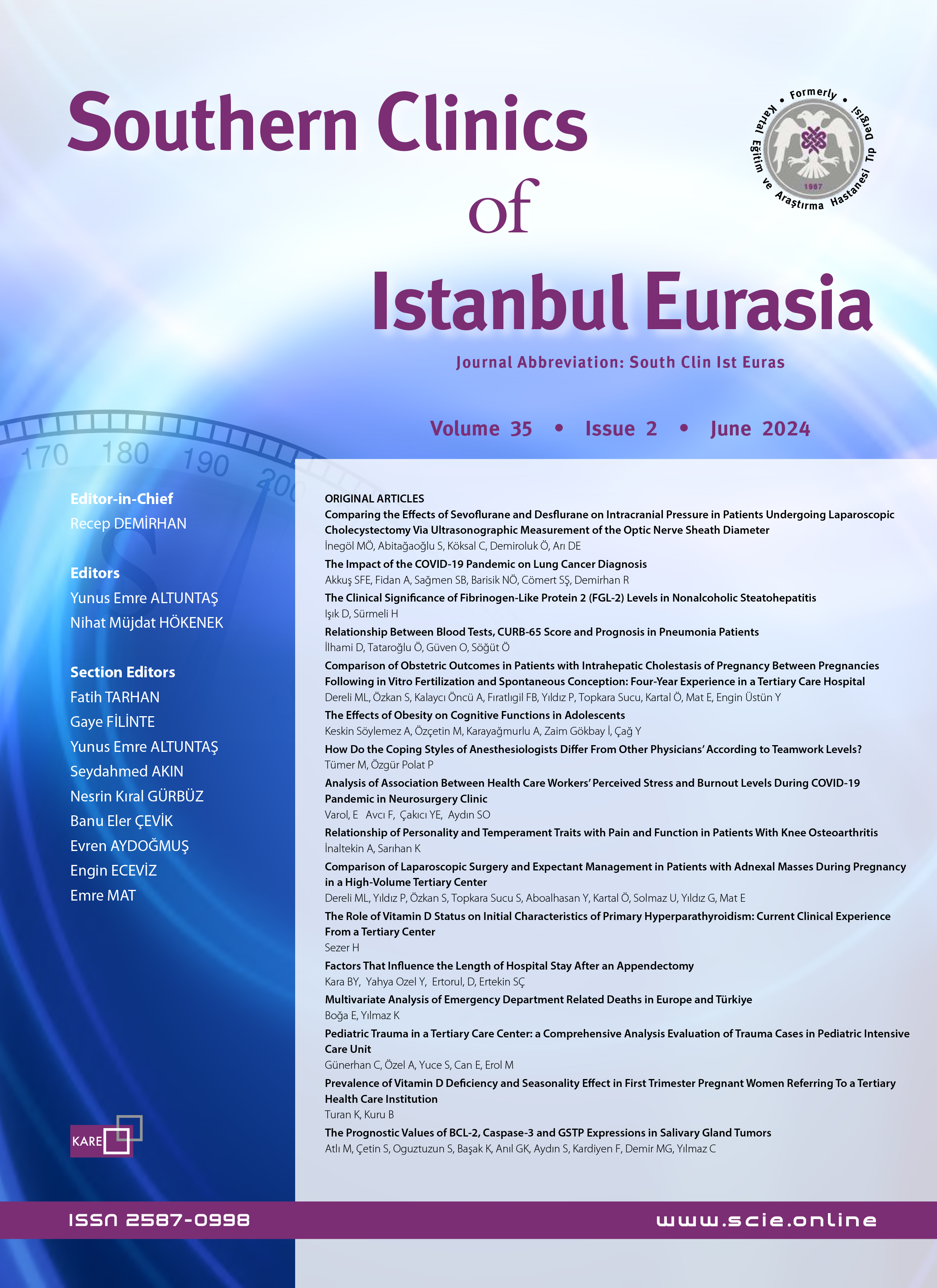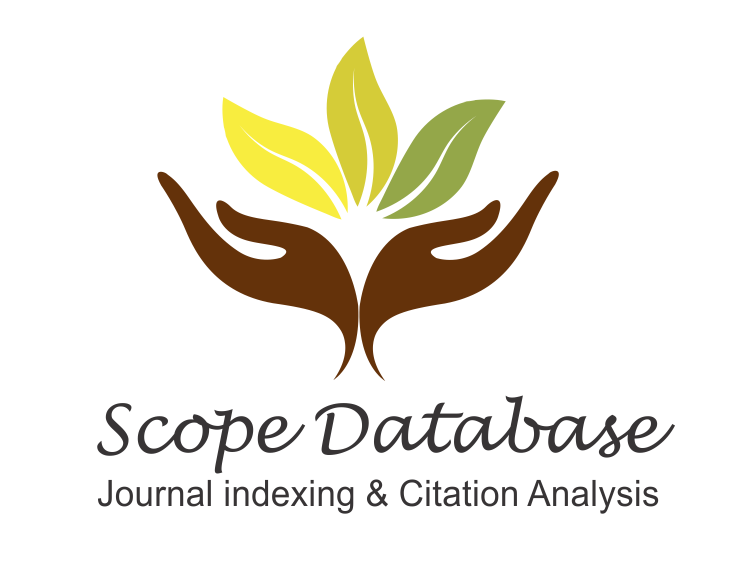Volume: 24 Issue: 1 - 2013
| RESEARCH ARTICLE | |
| 1. | Comparison of comfort, recovery and discharge times of sodium thiopental and propofol anesthesia in pediatric patients who underwent outpatient anesthesia for magnetic resonance imaging Cemil Adaş, Hilal Adaş, Gül Ergun, Neşe Aydın, Nurettin Kurt, Fethi Gül, Uygar Utku, Özcan Pişkin doi: 10.5505/jkartaltr.2013.57704 Pages 1 - 4 OBJECTIVE: In this study we compared sodium thiopental and propofol anesthesia in children who underwent outpatient anesthesia for magnetic resonance imaging (MRI). METHODS: This study included 102 children who required sedation for MRI. Patients were divided into two groups randomly. In the 1st group sodium thiopental, in the 2nd group propofol was given. RESULTS: Total discharge time, sedation induction time, mobility rates during shooting and side-effect were compared. CONCLUSION: In need of sedation for MRI in pediatric patients, when the propofol and sodium thiopental group compared; the induction time was significantly faster in the propofol group and also shorter hospital discharge was seen. |
| 2. | The outcomes of Descemets Stripping Automated Endothelial Keratoplasty (DSAEK) for corneal endothelial dysfunction Oğuzhan Genç, Anıl Kubaloğlu, Yasin Çınar, Alime Sefer Güneş, Pınar Sorgun Evcili, Tuba Kabataş Çınar, Nurullah Bulut, Işıl Kutlutürk doi: 10.5505/jkartaltr.2013.07742 Pages 5 - 12 OBJECTIVE: Descemets Stripping Automated Endothelial Keratplasty (DSAEK) results in corneal endothelial dysfunction was reported in this paper. METHODS: Twenty-five eyes of 25 patients having endothelial dysfunction were included in this study. Preoperatively and postoperatively complete ophthalmic examinations were performed including uncorrected visual acuity (UCVA), best corrected visual acuity (BCVA), intraocular pressure (IOP), central corneal thickness (CCT), endothelial cell density (ECD) and complications were recorded. RESULTS: 19 eyes (76%) had bullous keratopathy, 4 eyes (16%) had Fuchs endothelial dystrophy and 2 eyes (8%) had corneal graft failure. The mean follow up period was 20.8±7.8 months (6-36 months). The mean UCVA was improved from 0.11±0.11 (range, hand motion-0.3) to 0.52±0.23 (range, 0.1-0.9) (p<0.05). At the last visit the mean BCVA was improved from 0.12±0.12 (range, hand motion-0.3) to 0.65±0.26 (range, 0.1-1.0) (p<0.05). In 20 (75%) eyes, the mean BCVA was 0.3 or better at the last control visit. The mean ECD of donor corneas were 2378.24±250.34 cell/mm² preoperatively. At the first month the mean ECD was 1783.34±256.93 cell/mm² (range, 75-2017.43). At the last control visit the mean ECD was 1671.98±235.54 cell/mm² (1497.45-1954.34). The mean IOP was 15.12±2.24 mmHg (range, 11-21 mmHg) preoperatively. At the last control visit the mean IOP was 14.83±1.34 mmHg (range, 13-17 mmHg). CCT was 640.36±14.82 μ (range, 624-678 μ) at the first control and it was 639.54±15.76 μ (range, 621-679 μ) at the last control visit. CONCLUSION: DSAEK surgery was found to be safe and effective in corneal endothelium diseases. This method is expected to be used more frequently in the future with advances in technique. |
| 3. | The importance of size and number of cysts in pulmonary hydatid cyst patients Şenol Ürek, Tuğba Coşgun, Levent Alpay, Mustafa Akyıl, Aysun Mısırlıoğlu, Çağatay Tezel doi: 10.5505/jkartaltr.2013.37039 Pages 13 - 18 OBJECTIVE: We aimed to evaluate patients who underwent surgery because of hydatid cysts and to have providence for future patients. METHODS: Patients (n=78) who had surgery with a hydatid cyst between 2006-2011 were considered retrospectively. Pre- to post-operative parameters were compared and related cases were investigated. In this study it was aimed to have providence postoperatively about time and amount of drainage and hospitalization time of patients according to age, effected side, symptoms, and preoperative radiological findings of patients, especially size of hydatid cyst or number of cysts. RESULTS: In our study, the mean age of patients who had surgery because of hydatid cysts was 33.74±17.1 years. Sizes of cysts were compared with age, time and amount of drainage, and hospitalization time of patients. Only age and size of cysts was inveresely correlated statistically. Size and number of cysts, postoperative morbidity, time and amount of drainage and hospitalization time of patients were analyzed with Spearmans rho test. Only the relation between the number of cysts and duration of drainage was significant (p=0.04). CONCLUSION: As predicted in pulmonary hydatid disease, early age led to bigger cyst dimension. However, no correlation was determined between cyst count/dimension. |
| 4. | Tip-apex distance measurements in patients with intertrochanteric femur fractures who have been treated with 135° dynamic hip screw and impact on outcomes Kubilay Beng, Osman Lapçın, Sami Sökücü, Gökhan Özkazanlı, Yavuz Kabukçuoğlu, Atilla Sancar Parmaksızoğlu doi: 10.5505/jkartaltr.2013.82687 Pages 19 - 24 OBJECTIVE: We measured tip-apex distance (TAD) in patients with intertrochanteric femur fracture who were treated surgically with 135° dynamic hip screw. We evaluated whether TAD is an appropriate measurement to determine the risk of cut-out. METHODS: 110 patients (55 females, 55 males) who were treated between 2000-2005 were included in this study. The mean age of the patients during operation was 69. Twenty of these fractures (18%) were stable, and 90 (82%) were unstable. RESULTS: According to Kyle classification; there were 1 type 1, 19 type 2, 85 type 3, 5 type 4 fractures. The mean age of the patients in whom cut out of the screw was observed was 79. All of these patients had unstable intertrochanteric fracture (Kyle type 3). The TAD averaged 21.9 mm. In the 3 femoral heads from which the screw had cut-out, TAD averaged 36.08 mm. None of the screws with an averaged TAD of 21.9 or less were cut-out. CONCLUSION: With use of TAD, both the location and depth of penetration of the screw are taken into account. However, TAD is not a unique predicting measurement. The stability of the fracture and placement of the screw in the femoral head are important factors in the results. |
| 5. | Investigation of pain, disability level and quality of life in patients with cervical disc prosthesis and peek cage Filiz Altuğ, Ali Yılmaz, Erdal Coşkun, Uğur Cavlak doi: 10.5505/jkartaltr.2013.59389 Pages 25 - 31 OBJECTIVE: In this study, we investigated early pain severity, disability status and quality of life in patients who received cervical disc prosthesis surgery and one level peek cage application for cervical disc pathologies. METHODS: This study evaluated 15 patients who received one level cervical disc prosthesis and 15 patients with peek cage application. As well as demographic characteristics, their pain severity, disability status and quality of life were evaluated using the Visual Pain Scale, Neck Disability Index and SF-36 Quality of Life Questionnaire, respectively. Evaluations were repeated preoperatively and postoperatively at the third month. RESULTS: Mean pain duration value was 41.00±35.15 months for the prosthesis surgery group and 82.40±43.47 months for the peek cage group. A significant difference (p=0.008) was found between groups regarding pain duration. Postoperative third month rest pain showed significant differences (p=0.010) for the prosthesis group (p=0.010). There was no significant differences on Neck Disability Index values preoperatively (p=0.076), but the values became significant postoperatively (p=0.008). Postoperative SF-36 Quality of Life Index values showed significant differences for the prosthesis group regarding general health status (p=0.014), pain symptoms (p=0.040) and physical functioning values (p=0.001). CONCLUSION: Cervical disc prosthesis surgery results in faster functional recovery in patients with cervical disc pathologies. |
| 6. | The predictive value of 6-12 hour and 24 hour bilirubin levels in determining significant hyperbilirubinemia among healthy term neonates Gamze Özgürhan, Özgül Yiğit, Elif Ünver Korğalı, Meliha Aksoy Okan, Nevin Cambaz, Asiye Nuhoğlu, Nedim Samancı doi: 10.5505/jkartaltr.2013.46547 Pages 32 - 36 OBJECTIVE: The predictive value of 6-12th and 24th hour bilirubin levels in determining significant hyperbilirubinemia among healthy term neonates was evaluated in this study. METHODS: Term, healthy neonates with hyperbilirubinemia were included. Serum total bilirubin levels were determined at the postnatal 6-12th and at the 24th, 48th, 72nd and 96th hours. The predictive value of the 6-12th and 24th hour bilirubin levels in determining significant hyperbilirubinemia was evaluated by ROC analysis. RESULTS: Of the 276 neonates, 134 (48.5%) were males and 142 (51.5%) were females. Clinical jaundice was observed in 240 (86%) of them. Thirty seven (13.4%) developed significant hyperbilirubinemia. A bilirubin level at the 6-12th hours higher than 3.9 mg/dl was found to be significant with a sensitivity and specificity of 67.6% and 64.9%, respectively (p<0.002). The positive predictive value was 22.9% and the negative predictive value was 92.8%. A bilirubin level at the 24th hour higher than 7.7 mg/dl was found to be significant with a sensitivity and specificity of 78.4% and 77.8%, respectively (p<0.001). The positive predictive value was 35.4% and the negative predictive value was 95.9%. Total bilirubin levels at the 24th hour were found to be more predictive than bilirubin levels at the 6-12th hours in determining significant hyperbilirubinemia. CONCLUSION: Total bilirubin levels at the 24th hour is a valuable criteria in determining significant hyperbilirubinemia among term neonates discharged early. |
| 7. | Relationship between diabetic retinopathy and neuropathy in diabetic foot ulcers Serkan Akçay, Cemal Kazımoğlu, İsmail Safa Satoğlu, Ahmet Kurtulmuş, Fırat Erpala doi: 10.5505/jkartaltr.2013.19327 Pages 37 - 41 OBJECTIVE: The aim of our study is to investigate the prevalence and association of diabetic rethinopathy and diabetic neuropathy in patients with foot ulceration. METHODS: Diabetic patients with foot ulcers who admitted to our diabetic council and surgical debridement was recommended were included in the study. Only 43 patients (10 female, 33 male) who were followed up regularly during the wound healing period were included in the study. Diabetic retinopathy, independent co-morbidites (hypertension, hyperlipidemia), tobacco use, and history of diabetes mellitus was recorded. Diabetic foot ulcers were classified according to the Wagner-Meggit classification. RESULTS: The average follow up period for diabetes mellitus was 11.46 (range, 2-30) years. The average follow up period was 135.3 (33-285) days. Particularly the prevalence of diabetic neuropathy in patients with diabetic rethinopathy (66.7%) and in patients with diabetic neuropathy (64.3%) were very close. This result reveals a strong relationship between diabetic retinopathy and neuropathy in patients with neuropathic foot ulceration. CONCLUSION: Diabetic foot ulcers are the most common indication for amputation and they have strong contribution with high morbidity rate. For this reason we think that diabetic retinopathy and diabetic foot research is very important for early diagnosis and proper treatment. |
| CASE REPORT | |
| 8. | Pregnancy after renal transplantation: Case report A Yasemin Karageyim Karşıdağ, Gökçe Anık İlhan, Esra Esim Büyükbayrak, Bülent Kars, Meltem Pirimoğlu, Gülay Dalkılıç, Orhan Ünal, Cem Turan doi: 10.5505/jkartaltr.2013.55707 Pages 42 - 45 Pregnancy is a rare condition in patients with end stage chronic renal disease. Women with a renal transplant can have a successful pregnancy; however there are many risks for both the mother and the fetus. These patients should be carefully monitored and a multidisciplinary approach with specialists of nephrology, obstetrics and neonatology is required. In this report a 31 year old pregnant women with a renal transplant of six years is presented. At the 35th week of pregnancy, the delivery of a 2070 gram healthy male infant was performed via cesarean section due to premature rupture of membranes and primipara breech presentation. |
| 9. | Modified Bilhaut-Cloquet procedure for Wassel type III polydactyly of the thumb Afet Öncel, Serdar Toksoy doi: 10.5505/jkartaltr.2013.49379 Pages 46 - 49 Thumb duplication is a pre-axial polydactyly and one of the most frequent congenital deformities of the hand after syndactyly, and the incidence of preaxial polydactyly is reported as 1 in every 3.000 live births. The surgical options for congenital thumb duplication fall into two groups: ablation of one of the duplicated thumbs, with or without reconstruction of the other part, and the Bilhaut-Cloquet procedure or a modification of it. In this case study, our aim was to emphasize the effectiveness of the modified Bilhaut-Cloquet procedure for preserving the metacarpophalangeal joint motion and proximal phalanx unity in more deformed Wassel type 3 polydactyly. |
| 10. | Death due to scorpion sting: Child case report Ali Karakuş, Vefik Arıca, Tanju Çelik, Murat Tutanç, Cem Zeren, Seçil Günher Arıca doi: 10.5505/jkartaltr.2013.29292 Pages 50 - 53 A scorpion sting is a serious and life-threating emergency emergent condition and is generally fatal in childhood. Heart, respiratory and nervous system complications may occur due to the effect of scorpion venom. The precise indications and using scorpion antivenin and other drugs in the treatment is still controversial. In this study, etiological factors and treatments are discussed in a four year old boy that died due to a scorpion sting. |
| 11. | Mixed Merkel cell carcinoma and squamous cell carcinoma: Case report Dinç Süren, Ruksan Elal, Mustafa Yıldırım, Arsenal Sezgin, Murat Şedele, Cem Sezer doi: 10.5505/jkartaltr.2013.69782 Pages 54 - 59 Merkel cell carcinoma, also known as small cell carcinoma of the skin, is a malignant cutaneous neuroendocrin tumor. The diagnosis of this tumor is rare but it has high tendency for local recurrence, regional lymph node and distant metastases and also has a high mortality rate. For these reasons, immunohistochemical studies are necessary for making a definitive diagnosis and also for excluding a diagnosis. In this publication, we discuss a case of mixed Merkel cell carcinoma and squamous cell carcinoma in the context of the contemporary literature. |
| 12. | Complicated Meckels diverticuls in a child and a pregnant: Two case reports Oğuzhan Dinçel doi: 10.5505/jkartaltr.2013.46872 Pages 60 - 63 Meckels diverticulum is the most common congenital anomaly of the gastrointestinal system. It originates from the nonclosure of the omphalomesenteric tube between the 5th-7th intrauterine week. Meckels diverticulum can be symptomatic only when a complication develops. It could be found rarely by radiodiagnostic investigations or during laparotomy in adults. We report here two cases of Meckels diverticulum with complications in a pregnant woman and a child. |
| 13. | A case of hydatid cyst mimicking metastatic lung cancer Tülin Durgun Yetim, Ayşen Taslak Şengül, Yasemin Bilgin Büyükkarabacak doi: 10.5505/jkartaltr.2013.80764 Pages 64 - 67 Hydatid cysts of the lung can mimic malignant diseases such as lung cancer, infectious diseases such as tubecrculosis, or benign pathologies. It should be kept in mind that hydatid cysts of the lung can radiologically mimic many lung pathologies, primarily malignancies. Necessary investigations should be performed for the differential diagnosis in the preoperative period. We, therefore, believed that it is worthwhile to share a 31 year-old patient with a hydatid cyst of the lung who was thought to have metastatic lung cancer. |
| REVIEW | |
| 14. | Congenital malformations of the esophagus Serdar Evman, Recep Demirhan doi: 10.5505/jkartaltr.2013.05668 Pages 68 - 72 Congenital anomalies of the esophagus comprise a diverse group of malformations. They originate from the defective budding, differentiation and separation of the primitive foregut, usually during the 6th or 7th week of the embryonic period. Diagnoses of these malformations are based on clinical suspicion, physical examination, and necessary radiological and endoscopic examinations. The principal of treatment lies on surgical resection and/or reconstruction of the esophagus. |



















